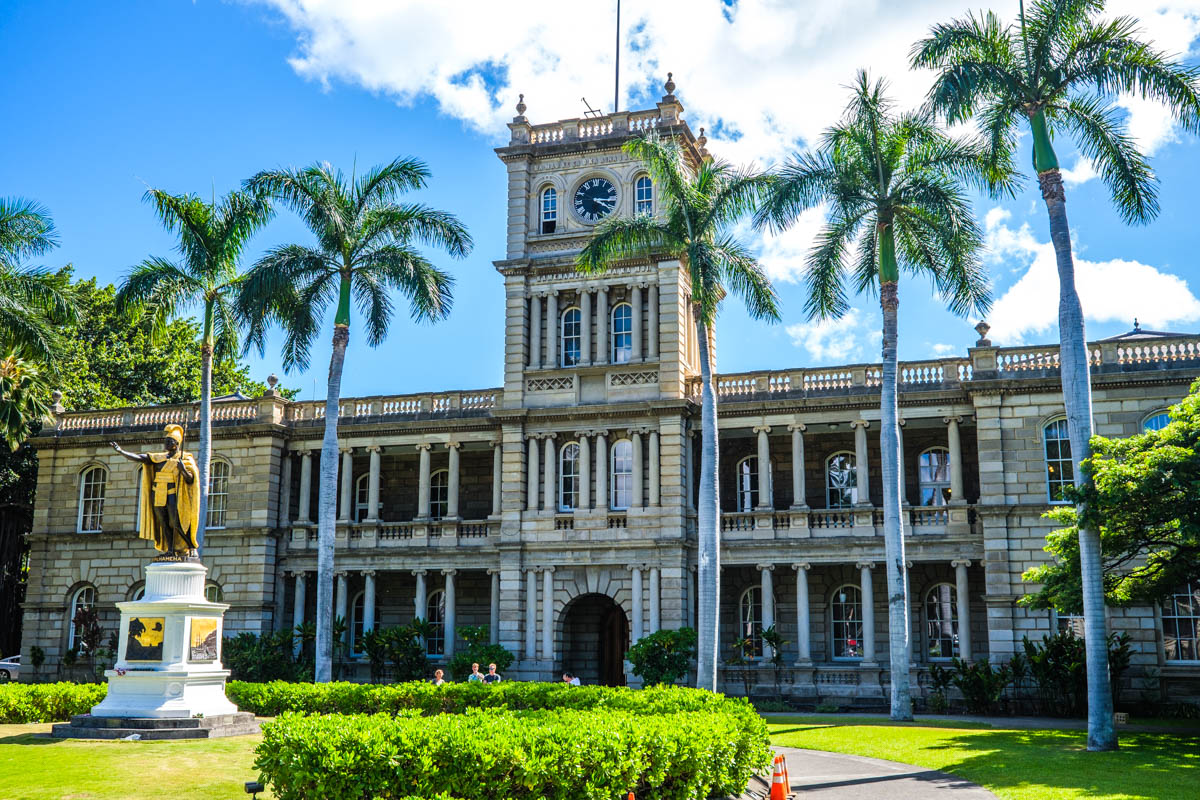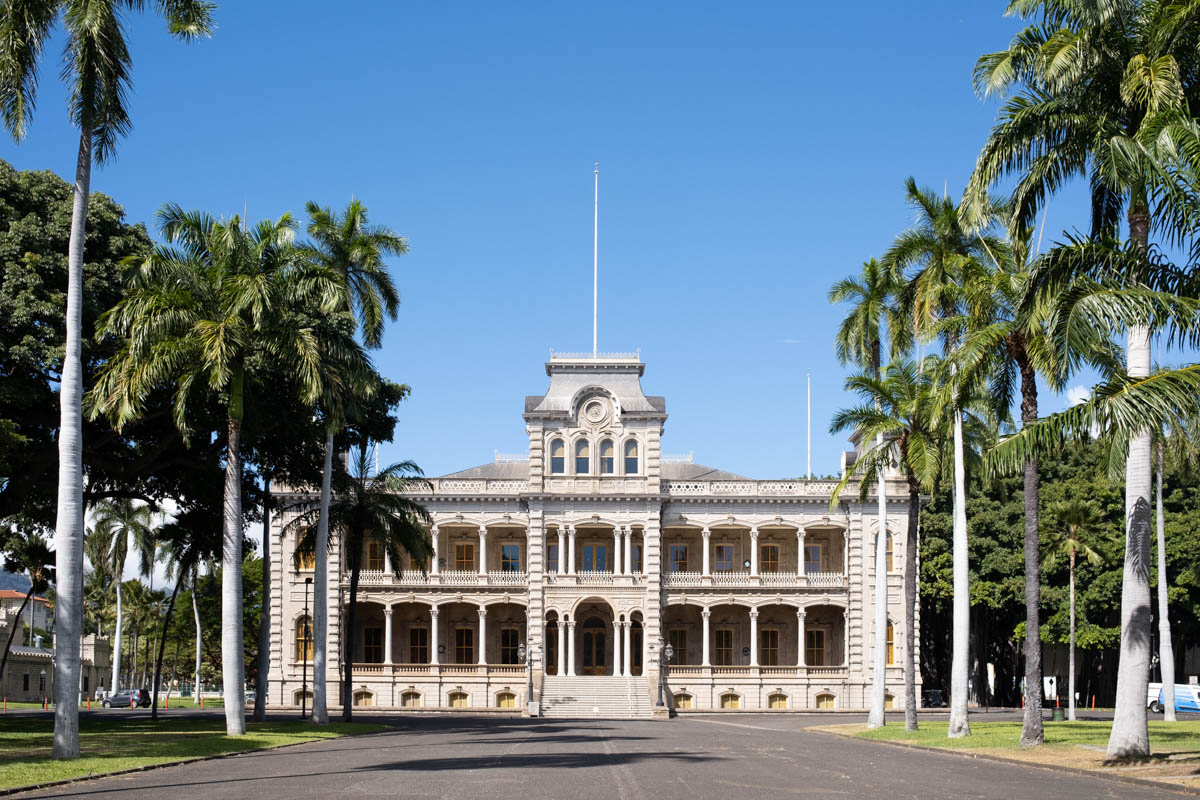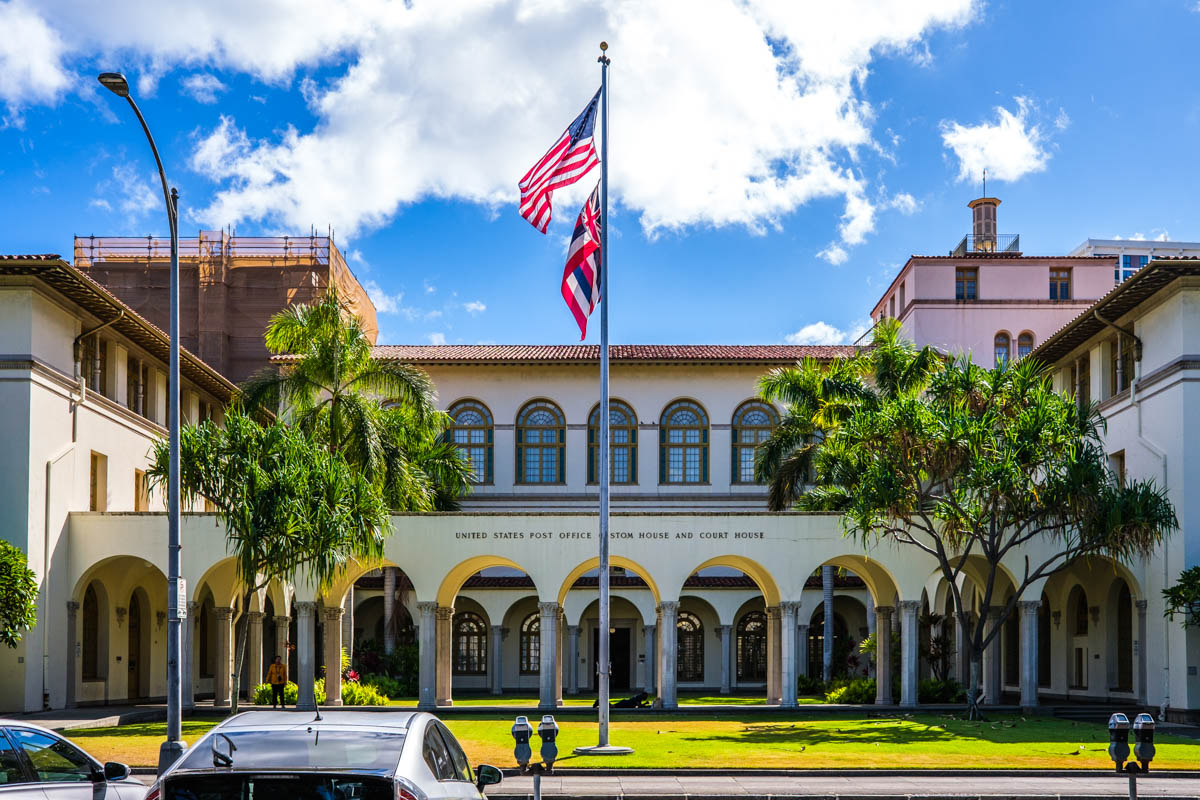HONOLULU | Downtown Honolulu is the historic, economic, and governmental centre of Honolulu. It’s split into four areas, each with their distinct vibe. These are, the Capitol District, the Central Business District, Chinatown, and the Waterfront. In this post, I’ll be focusing on the beautiful historic buildings found in the Capitol District.
Honolulu’s Capitol District is well worth visiting when you’re in town. It’s fascinating to walk through, and feels a world away from the hectic, high rise, tourist atmosphere of Waikiki. A self-guided walking tour of the Capitol District is easily done. Here’s a list of must-see buildings.
King Kamehameha I Statue
King Kamehameha I united the Hawaiian Islands into one royal kingdom in 1810 after years of conflict. Four commissioned states of the King can be found across the United States, the most recognisable being that at the front of Aliʻiōlani Hale.
Sculpted by American sculptor Thomas R Gould in Florence, and dedicated in 1883, this 5.5 metre tall bronze statue depicts Kamehameha in his royal garb, including a helmet of rare feathers and a gilded cloak. His right hand is extended in a welcoming gesture of aloha, while the spear in his left-hand symbolises Hawaii’s willingness and ability to defend itself from hostile nations.
Kawaiahaʻo Church
Popularly known as Hawaii’s Westminster Abbey, Kawaiahaʻo Church is a historic Congregational church, that was once the national church of the Hawaiian Kingdom and chapel of the royal family.
The church was constructed between 1836 and 1842, using around 14,000 450kg slabs of coral rock quarried from an offshore reef on the southern coast of Oʻahu.
Aliʻiōlani Hale (home to the Hawaii State Supreme Court)
Currently used as the Hawaii State Supreme Court, Aliʻiōlani Hale is the former seat of government of the Kingdom of Hawaii and the Republic of Hawaii. The building was designed by Australian architect Thomas Rowe in an Italian Renaissance Revival as the royal palace for King Kamehameha V, but never used as such.
Aliiaimoku Building
The Aliiaimoku Building was designed by Law & Wilson and erected for the state’s Department of Transportation in 1959. It’s still the department’s home today. The building’s trellised brise soleil and vertical sun screen fins combine for a unique look that’s both of its time, and timeless.
Hawaiʻi State Capitol
One of Honolulu’s best examples of Modernist architecture is the Hawaii State Captiol. It was designed in 1960 by architects Belt, Lemmon & Lo, in collaboration with John Carl Warnecke & Associates. Construction was completed in 1969, utilising mostly reinforced concrete, and incorporating the Hawaiian islands’ historical, cultural, and natural significance, into elements of the design.
Washington Place (The Governor’s Mansion)
This Greek Revival palace, built in 1846 is the official residence of the Governor of Hawaii. It’s best known as the home of Queen Lili’uokalan, who was arrested at the house in 1893 when the monarchy of the Hawaiian Kingdom was overthrown in a coup. This coup set the stage for the annexation of Hawaii to the United States.
Honolulu Hale (Honolulu’s City Hall)
Honolulu Hale is Honolulu’s City Hall. The building was completed in 1928, with input from many of the city’s top architects of the time – C.W. Dickey, Hart Wood, Robert Miller, and Rothwell Kangeter & Lester.
It was built in an Italianate Spanish Colonial Revival style, with an interior courtyard, staircase, and open ceiling modeled after the Bargello in Florence. Two three-story wings were added in 1951.




